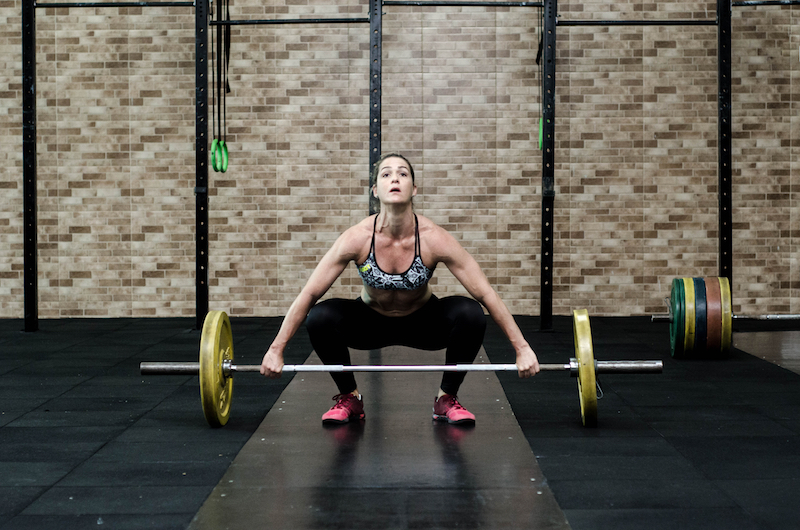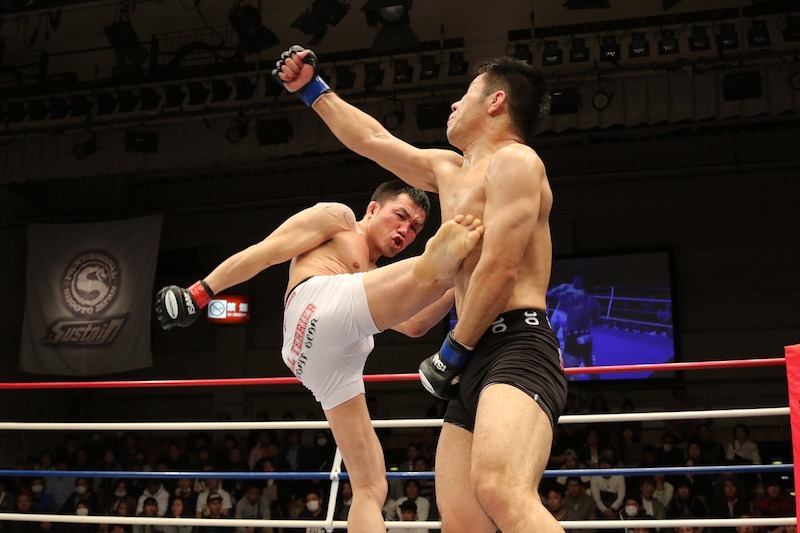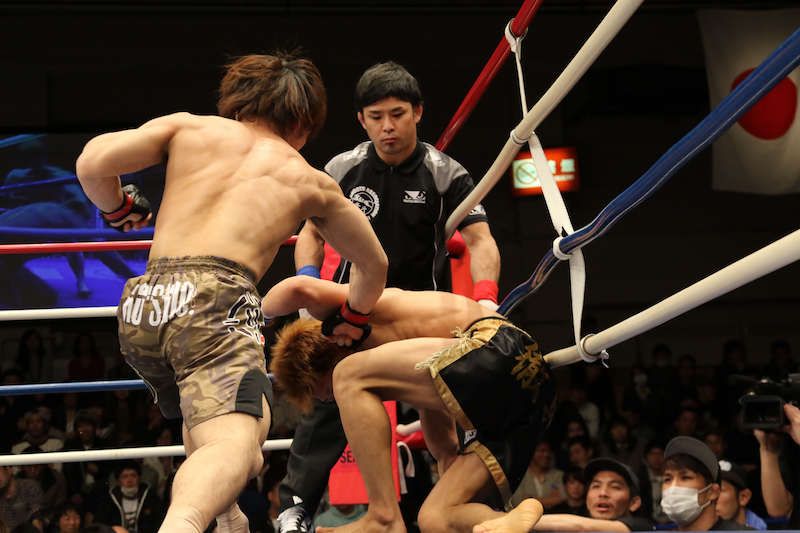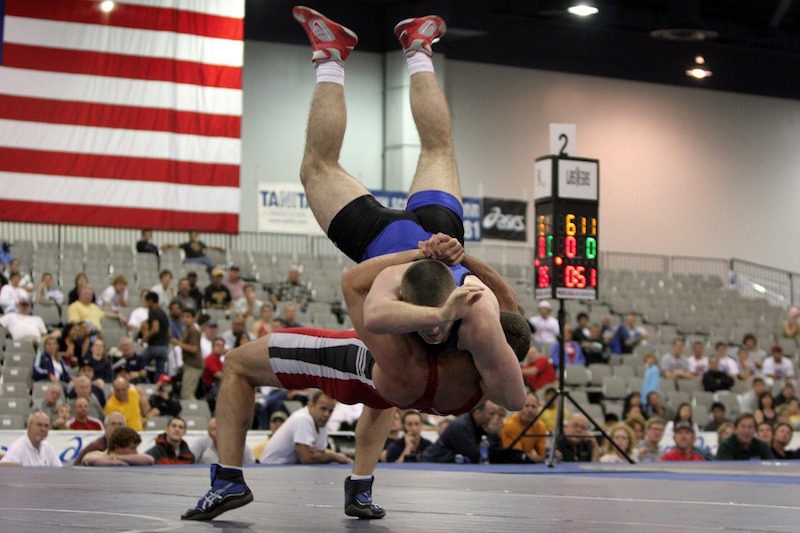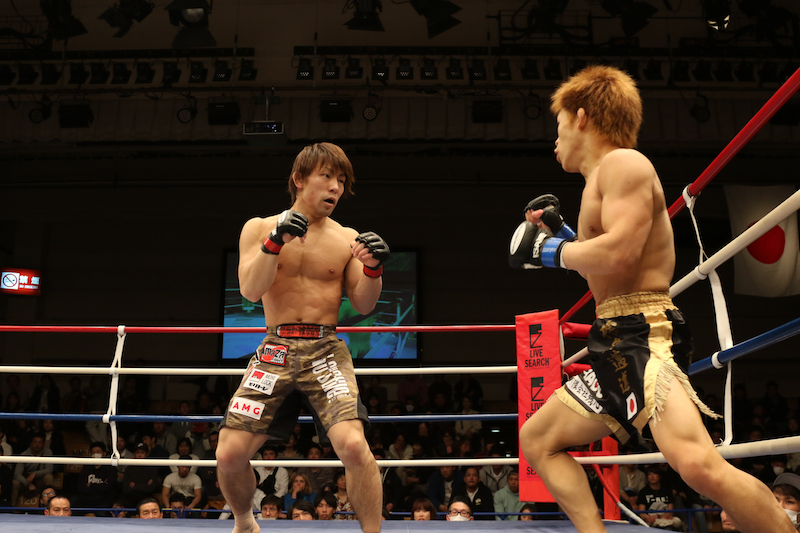Mixed Martial Arts (MMA) is a multi-faceted combat sport that combines many striking and grappling disciplines such as wrestling, jiu jitsu, judo, and kickboxing. Matches generally consist of 5 minute rounds that include flurries of explosive striking and takedowns, lots of isometric strength, and endurance work, especially while grappling. Fueling these actions necessitates a tremendous amount of anaerobic endurance.(1)
MMA strength and conditioning programming can be wildly dynamic as each athlete’s strengths and skill set, along with each opponent’s unique strengths and skill set, must be analyzed to craft an effective training program for each match.(2)
While the holistic training program design can be complicated, training for one of the most important individual physical characteristics of the sport — explosive power — is not. Olympic weightlifting movements are some of the very best power training exercises to allow a fighter to improve their striking, takedown, escape ability, and intermittent power endurance throughout a bout.

Producing Power in MMA
Since there are many ways to win an MMA bout, many of which depend on being strategic and skill-based, no athletic ability can ever be a sole predictor of success in a match. However, it is fair to say that the more powerful fighter stands a significant advantage over their competitor.
The possession of power allows for faster and more impactful strikes and an enhanced ability to close the distance and achieve a takedown or escape from a hold. The execution of skills late in a match can be impaired if power output is diminished due to fatigue. Power endurance training can help sustain a fighter’s explosive characteristics late in a match where fitness can be a more deciding factor in the outcome of a match.(3)
[Ever wondered if fitness events should include combat? Here’s one author who makes a strong case.]
How Olympic Weightlifting Can Improve MMA
The execution of Olympic weightlifting exercises is one of the most popular modes of power training used in sports performance workouts.(6) Olympic weightlifting exercises primarily increase power development in the hip and knee extensors, which are critical to common sporting movements such as running, jumping, and ballistic throwing motions. These facts are almost common knowledge amongst sportsman and coaches alike, however the role that Olympic weightlifting can play in a fighter’s training regimen may be far less understood.
Striking, which includes punches and kicks, are largely powered by the hip musculature. With increasing striking force, shifts in force generation away from the limbs and into the hips have been documented. This means that to maximize the speed and power of a punch or kick, a fighter must learn to tap into the power of their hips. The rapid force generation that occurs while performing Olympic weightlifting movements such as the snatch, clean, and jerk possesses the specificity required to enhance striking ability. Researchers and practitioners have made the case for the inclusion of Olympic weightlifting movements in a fighter’s training plan for this very reason.(8)
Effectively closing the distance on a fighter may require an explosive 1- to 2-meter forward burst to attempt a takedown, throw, or achieve an advantageous grappling hold. As sprinters commonly use Olympic weightlifting movements to enhance their acceleration ability over the first few steps of a sprint, fighters can equally reap the same benefit to allow them to quickly close the distance on their opponent. To accelerate quickly, rapid ground reaction forces need to be produced, which the Olympic weightlifting movements can develop.(6,7,9)
The bulk of a fighter’s training time is spent performing MMA specific skills training. After spending hours on the mat, in the ring, or in the cage training a plethora of skills over multiple combat disciplines, a fighter’s energy will dwindle.(3) The inclusion of accessory strength and conditioning work must be well-targeted to maximize its benefit while minimizing undue fatigue that could lead to overtraining or injury. Olympic weightlifting exercises such as the snatch, clean, or jerk are highly coordinated total body exercises. Beyond the hip and knee extensor power development previously mentioned, they offer a host of other benefits including the improvement in grip strength necessary for effective grappling, enhanced flexibility which can aid in the execution of jiu-jitsu skills, and optimal training volumes are very low which minimizes fatigue. For a fighter’s investment of time and energy, Olympic weightlifting is an extremely efficient mode of sport-specific conditioning.(6)
[Looking for a program for your sport? Read the author’s approach to programming Olympic weightlifting for any sport.]
Developing Power Endurance with Olympic Weightlifting
While peak power outputs may be necessary for a fighter to possess knockout striking power and menacing takedown ability, power endurance is an even more sought after ability in MMA.
Power endurance is defined as the ability to perform powerful movements repetitively over an extended time.(5) MMA matches consist of series of intermittent bursts of explosive engagements followed by strategic lulls of low intensity activity. A fighter’s ability to rapidly execute their desired skill late in a match can be the difference between being the predator or prey, and winning or losing.
Grappling sports have used non-traditional Olympic weightlifting programming to develop power endurance. Classically, Olympic weightlifting prescription involves high intensities and low volumes, while maximizing recovery between sets to minimize fatigue. A power endurance strategy that can be used by fighters would have the athlete perform a repetition at a defined time interval for an extended duration.
Lansky successfully applied a protocol to wrestlers where they would perform one- repetition of an Olympic weightlifting movement every 5-10 seconds, for a one to three minute duration, with between a 75 and 20 second rest duration between sets.(4) As with all good programming, periodization of the training was used which started the athletes with longer durations between reps, shorter duration sets, and longer durations between sets. Over time, he increased workload by decreasing duration between reps, lengthening set durations, and decreasing duration between sets. This style of Olympic weightlifting programming attempts to replicate the specific metabolic demands of the sport.
While this specific strategy was used with wrestlers, a similar approach can be adopted by MMA fighters and coaches based on each fighter’s skill-set and projected opponents. Fighters from grappling-based skill backgrounds tend to have more frequent bursts of explosive movement throughout a match, while fighters with a striking background have longer durations between explosive bouts due to the strategy of waiting for an opening before attacking.(1)
Wrap-Up
MMA has seen an explosion in popularity over recent years, and the sport science community is beginning to provide fighters and coaches with more evidence-based approaches to training program design.
The body of MMA sport science knowledge is still in its infancy, however Olympic weightlifting has already pervaded scientific literature as one of the best ways for fighters to train for power development.
Using both classical programming to develop peak power for devastating knockout and takedown ability, and non-traditional programming to elicit power endurance development to dominate for the full duration of a match, Olympic weightlifting should be included in every fighter’s strength and conditioning programming.
Editor’s note: This article is an op-ed. The views expressed herein and in the video are the author’s and don’t necessarily reflect the views of BarBend. Claims, assertions, opinions, and quotes have been sourced exclusively by the author.
References
1. Bounty, Paul La, et. al. (2011) Strength and Conditioning Considerations for Mixed Martial Arts. Strength and Conditioning Journal: February 2011 – Volume 33 – Issue 1 – p 56-67
2. Lachlan, James, et. al. (2013). Periodization for Mixed Martial Arts. Strength and Conditioning Journal: December 2013- Volume 35, Issue 6, pages 34-45
3. Lachlan, James, et. al. (2016). Towards a Determination of the Physiological Characteristics Distinguishing Successful Mixed Martial Arts Athletes: A Systematic Review of Combat Sport Literature. Sports Medicine: October 2016, Volume 46, Issue 10, pp 1525–1551
4. Lansky, Richard. (1999) Wrestling and Olympic-Style Lifts: In-Season Maintenance of Power and Anaerobic Endurance. Strength and Conditioning Journal: June 1999- Volume 21, Number 3, pages 21–27
5. Ratamess, Nicholas. (2011) Strength and Conditioning for Grappling Sports. Strength and Conditioning Journal: December 2011 – Volume 33 – Issue 6 – p 18-24
6. Suchomel, T. J., Comfort, P., & Stone, M. H. (2015). Weightlifting pulling derivatives: Rationale for implementation and application. Sports Medicine, 45(6), 823-839
7. Tack, Chris. (2013). Evidence-Based Guidelines for Strength and Conditioning in Mixed Martial Arts. Strength and Conditioning Journal: October 2013- Volume 35, Number 5, pages 79-92
8. Turner, Anthony. (2009) Strength and Conditioning for Muay Thai Athletes. Strength and Conditioning Journal: December 2009 – Volume 31 – Issue 6 – p 78-92
9. Weyand, P. et. al. (2000). Faster top running speeds are achieved with greater ground forces not more rapid leg movements. Journal of Applied Physiology, Vol. 89, Issue 5 pg. 1991-1999
